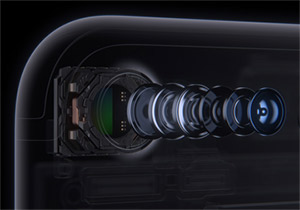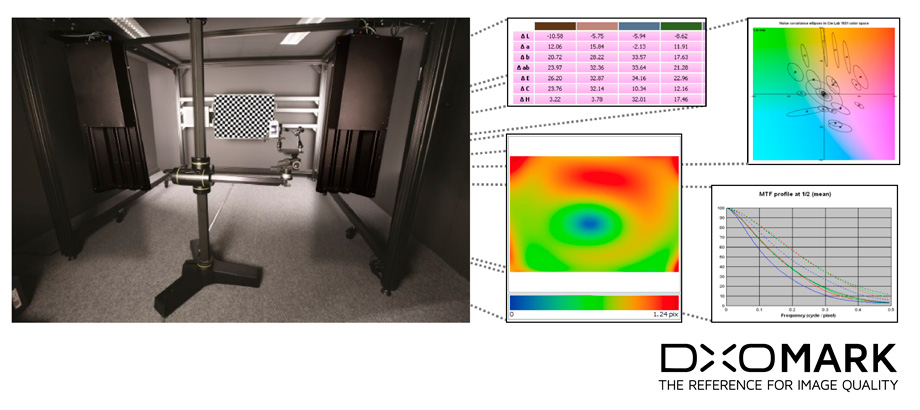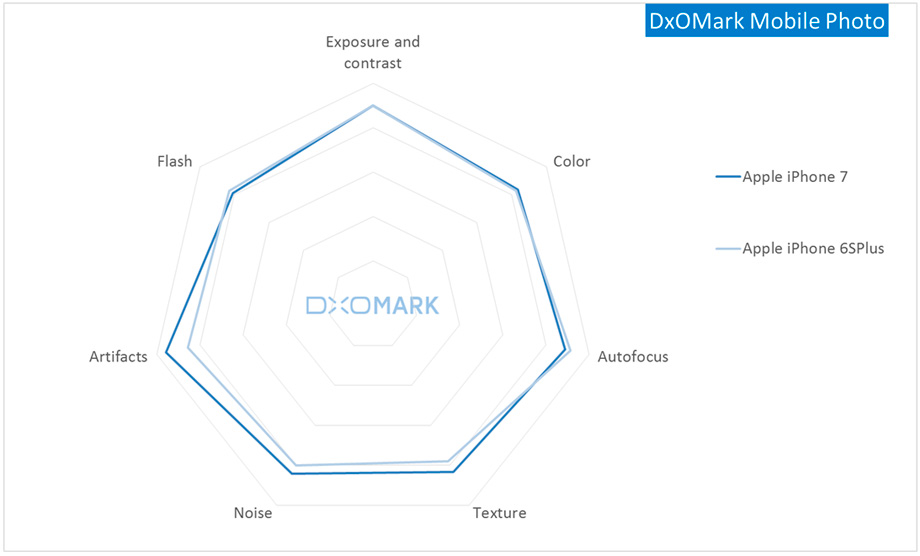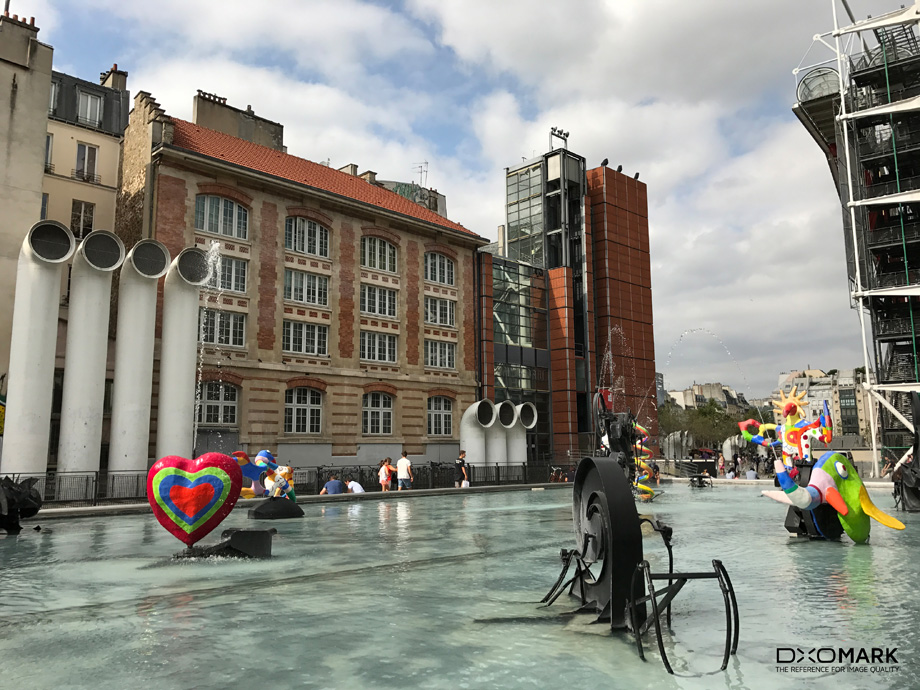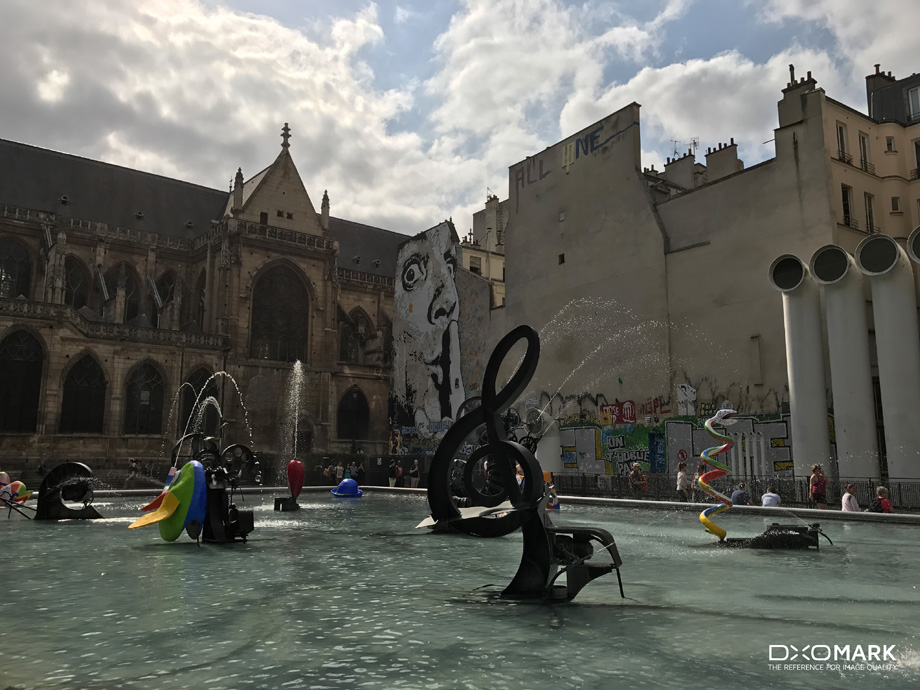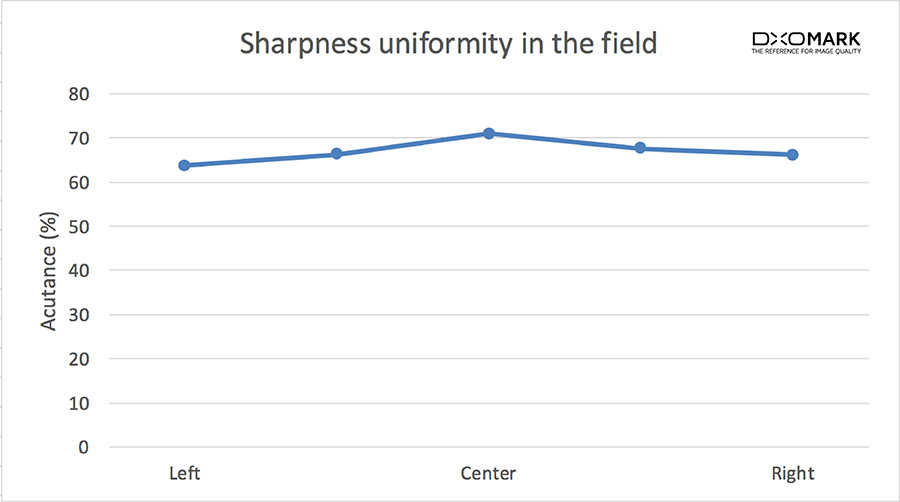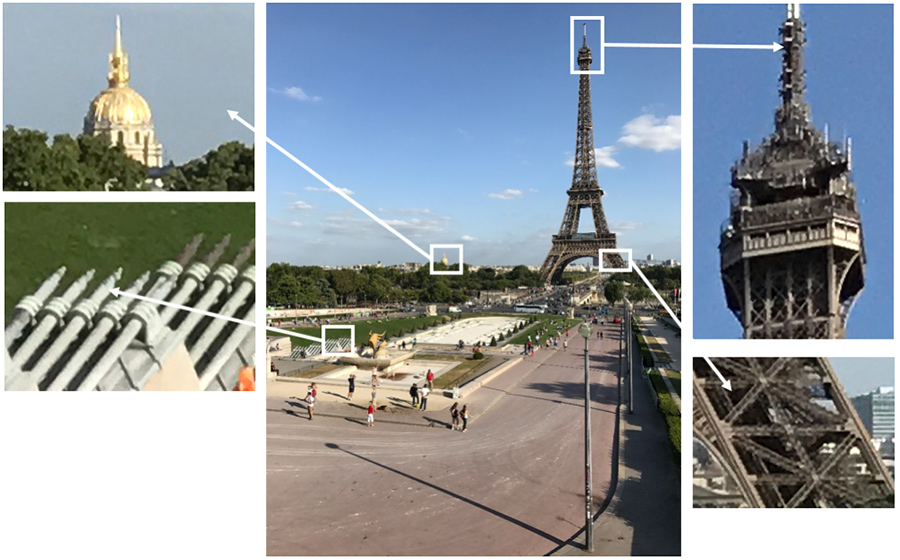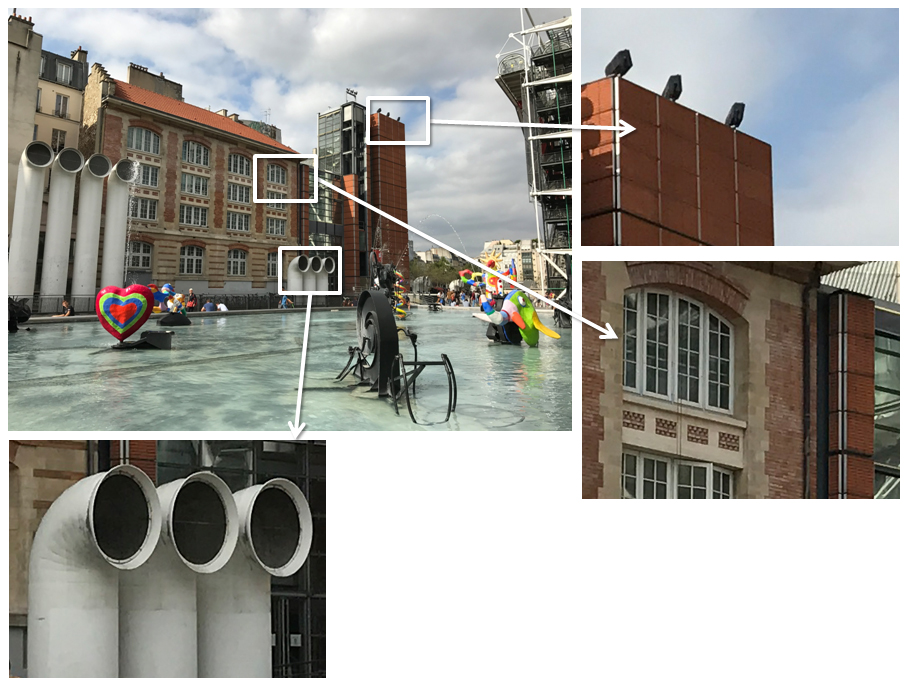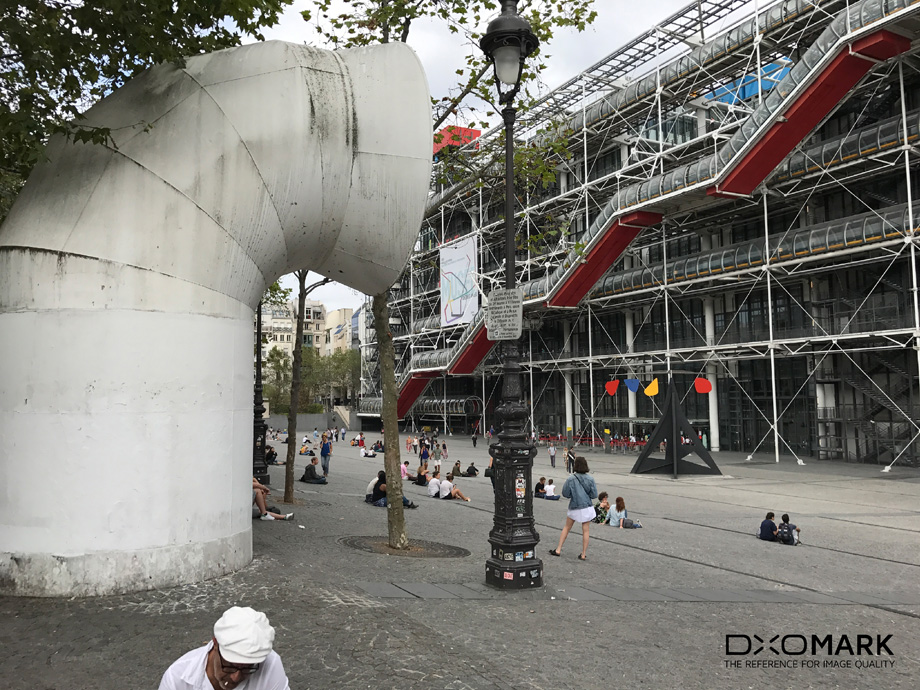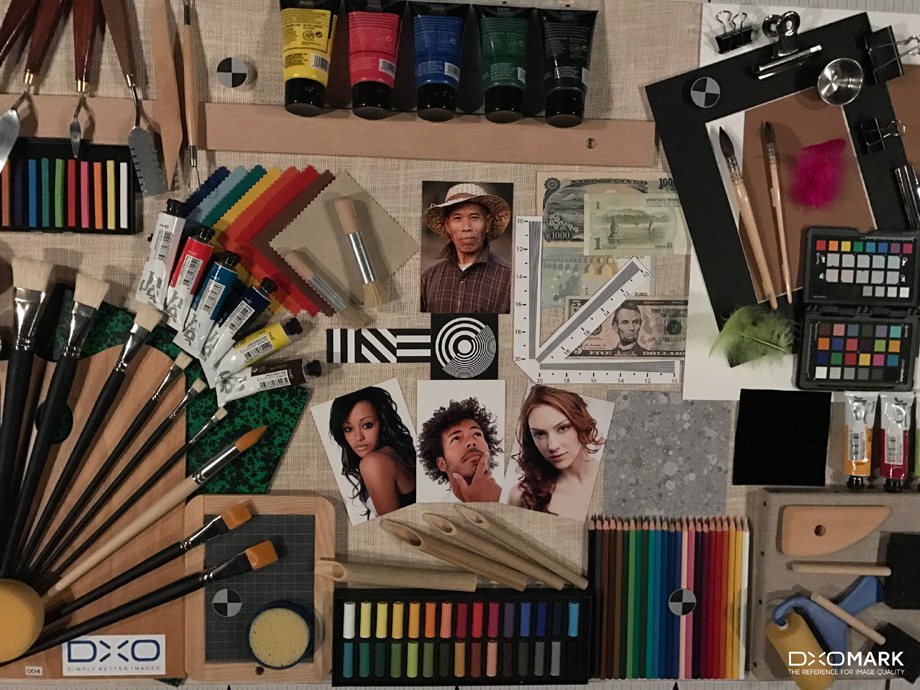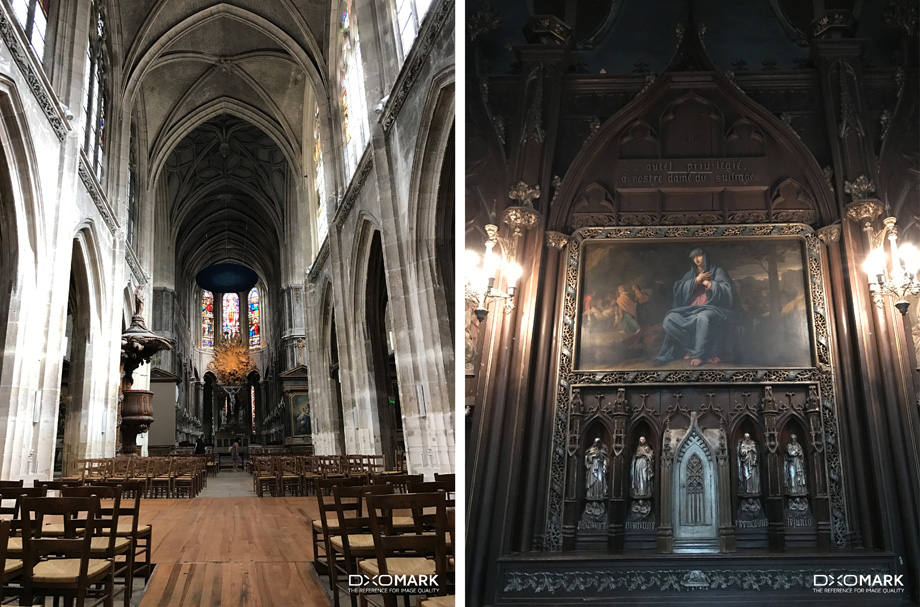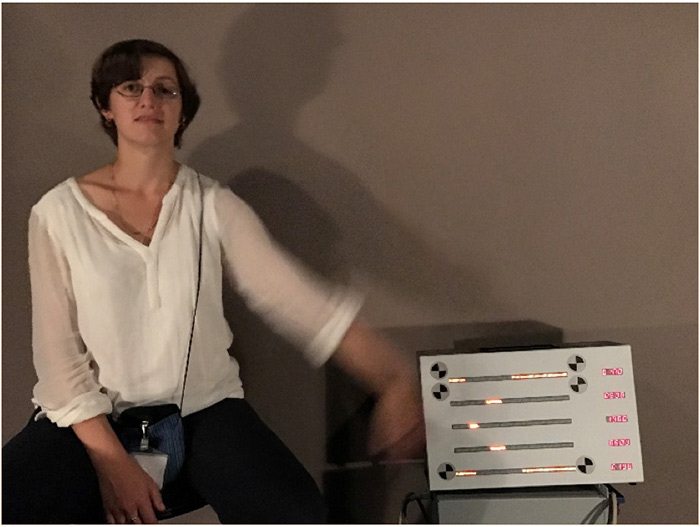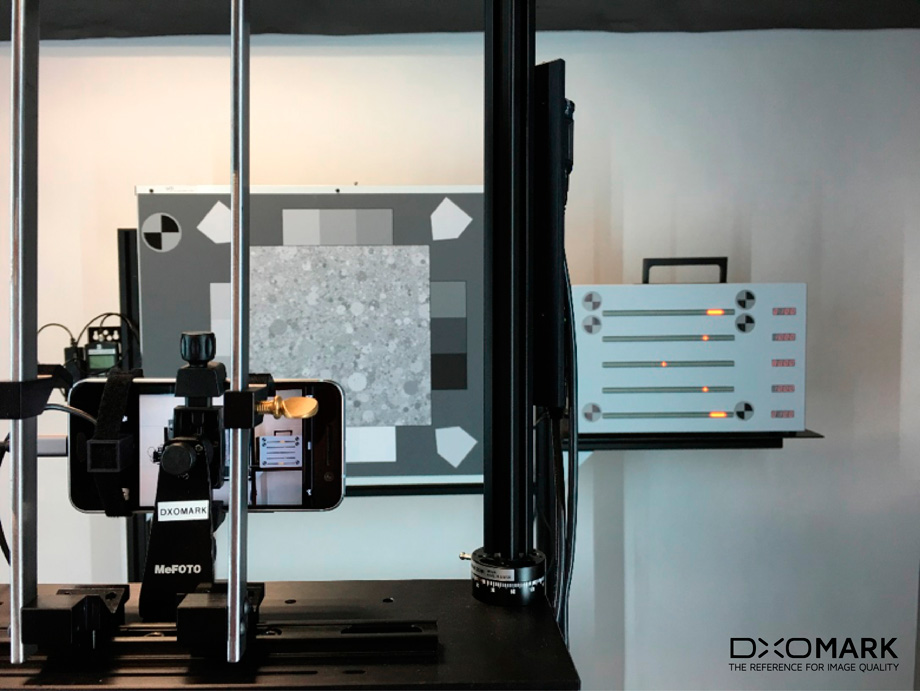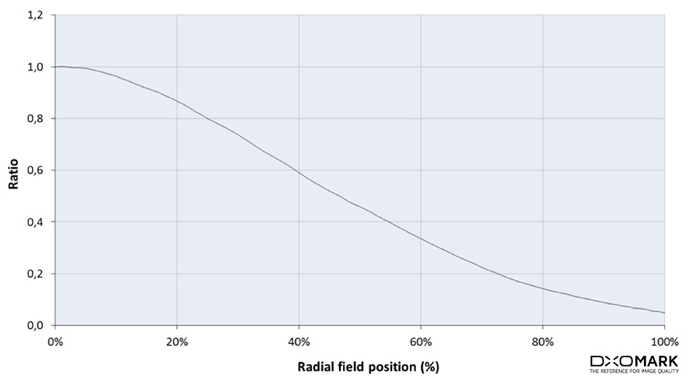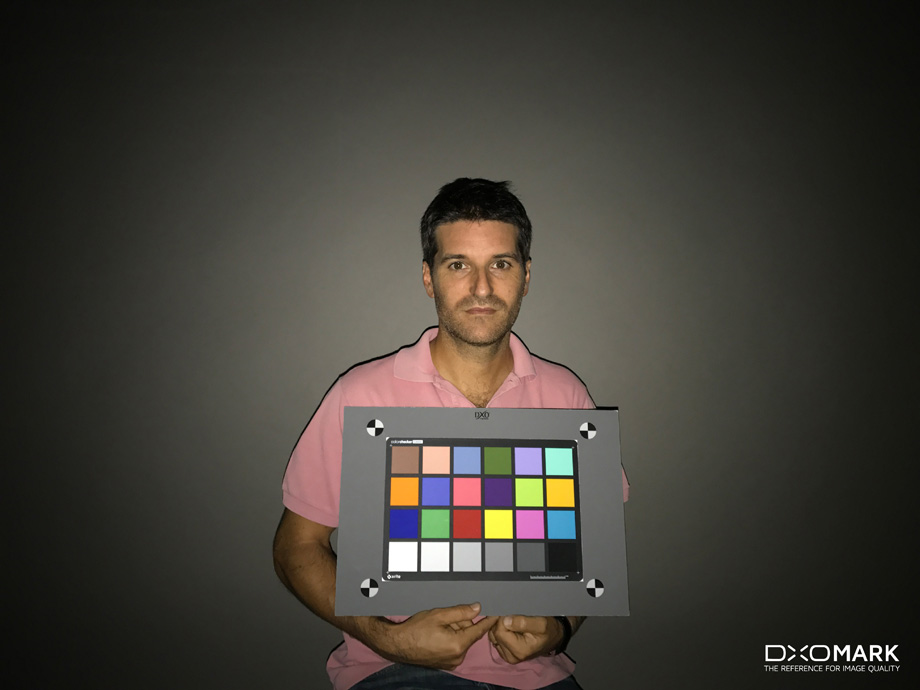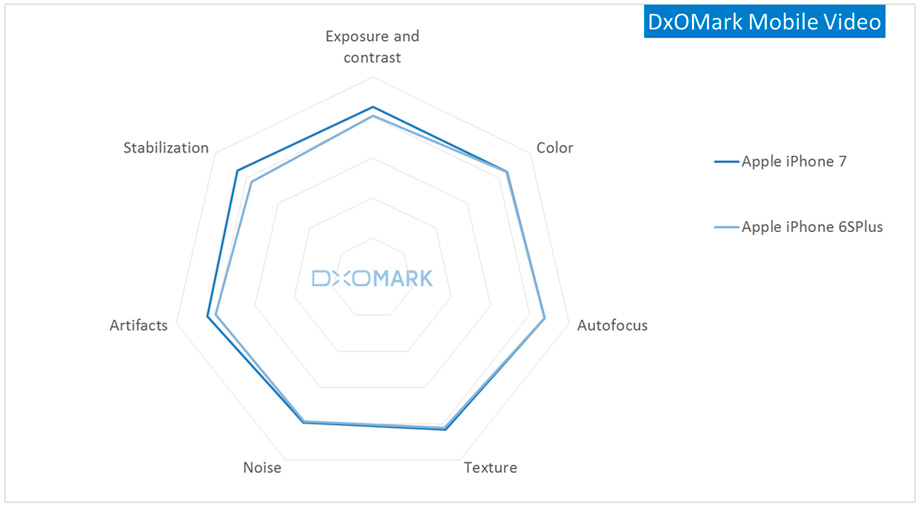- Специалисты DxOMark назвали камеру iPhone 7 одной из лучших в индустрии
- Apple iPhone 7 camera review: better than ever
- Upgraded sensor, lens, and image processing make for a winning combination
- Stay-tuned for our iPhone 7 Plus review: Coming very soon!
- Outdoors (bright daylight): Excellent exposures and dynamic range
- Indoors: f/1.8 lens with OIS = lower noise and better details
- Autofocus: Fast, but not always repeatable
- Flash: great color, but suffers from dark corners
- Video: Remarkable stabilization
- The iPhone 7 features uniquely rich colors
Специалисты DxOMark назвали камеру iPhone 7 одной из лучших в индустрии
Смартфон iPhone 7 занял лидирующие позиции в тесте DxOMark, оценивающем возможности фото- и видеосъемки различных мобильных устройств. Флагманское решение Apple по качеству съемки оказалось одним из лучших в индустрии, заявили эксперты издания.
Пользователи и журналисты, успевшие протестировать iPhone 7, считают камеру нового флагмана серьезным поводом, чтобы перейти на новинку с предыдущих моделей iPhone. В смартфоне установлен 12-мегапиксельный датчик, как в iPhone 6s, но при этом новая компактная модель располагает более светосильным 6-элементным объективом с диафрагмой f/1,8 и недоступной ранее в этой модели оптической стабилизацией, а 5,5-дюймовый флагман получил двойной модуль камер: одну с широкоугольным, другую с телеобъективом. В тестировании DxOMark принимал участие 4,7-дюймовый iPhone 7.
Специалисты ресурса, досконально изучив камеру «семерки», пришли к выводу, что по качеству съемки она одна из лучших в индустрии и лучшая в линейке iPhone. В DxOMark оценили камеру iPhone 7 в 86 баллов, тем самым, поставив его значительно выше iPhone 6s, результат которого 82 балла. Специалисты еще не тестировали iPhone 7 Plus, но его предшественник iPhone 6s Plus показал результат выше, чем 4,7-дюймовая одногодка (84 балла).
В целом эксперты высоко оценили камеру iPhone 7. По качеству съемки фото и видео аппарат оказался одним из лучших:
«Камера iPhone 7 получила серьезный апгрейд по сравнению с iPhone 6s и 6s Plus как с точки зрения возможностей, так и по качеству съемки. У всех трех смартфонов разрешение 12 мегапикселей, сенсор 1/2.7″ и широкоугольная линза (эквивалент 28 мм). Однако у iPhone 7 лучше апертура f/1.8 против f/2.2 в 6s и 6s Plus. Помимо этого появилась оптическая стабилизации изображения, ранее доступная только в смартфонах «Plus». Также была улучшена обработка изображения.
В нашем тесте iPhone 7 заработал 86 баллов. Новый смартфон Apple показал результат выше, чем iPhone 6s с 82 баллами и iPhone 6s Plus с 84 баллами. Улучшенная детализация, вероятно, связана с новым дизайном линзы, в то время как повышение качества объясняется использованием нового процессора обработки изображений (ISP). Благодаря последнему существенно уменьшилось количество шумов».
Специалисты отметили отличную экспозицию с широким динамическим диапазоном, правильные баланс белого и цветопередачу, а также высокий уровень детализации в условиях хорошего освещения. В числе недостатков камеры iPhone 7 названы неточности фокусировки и видимые шумы при съемке в условиях низкого освещения.
Источник
Apple iPhone 7 camera review: better than ever
Upgraded sensor, lens, and image processing make for a winning combination
With the launch of the iPhone 7 and 7 Plus, Apple has further improved the already excellent cameras from its previous generation, and added a variety of new features it hopes will continue to make the iPhone the world’s most popular camera. While some of the new features are reserved for the 7 Plus, the iPhone 7 has received plenty of upgrades as well – including a brighter lens, improved image processing, four-element flash, and optical image stabilization. Both phones also use a new, wider color gamut, DCI-P3, making for richer colors when used with Apple or other high-end displays that support the DCI-P3 standard. Apple is also proud of its new algorithms running on a beefy new image processor, that melds together several images to create the best possible result. Based on our tests, we’ll show you how the new technologies measure up.
DxOMark scientists have been working around the clock to analyze the performance of the iPhone 7 and 7 Plus
Stay-tuned for our iPhone 7 Plus review: Coming very soon!
The iPhone 7 Plus features additional capabilities based on its dual-camera architecture. It is not the first phone with a dual-camera, but it is the first to use the second camera for a 2x optical zoom, and computed depth information. Its new Portrait mode is designed to use the depth information gleaned from analyzing the images from both of its cameras to selectively-blur image backgrounds, while keeping the foreground subject sharp. This is intended to mimic the shallow DOF effect and pleasing “bokeh” that photographers using DSLRs and other standalone cameras have been able to achieve. The new features and technologies in the iPhone 7 Plus require additional time for testing, so its review will follow this one, and be published shortly.
DxOMark results: The iPhone 7 camera is Apple’s best yet
The iPhone 7 camera represents a very solid evolution over the iPhone 6s and 6s Plus in both features and image quality. All three phones feature a 12MP 1/2.7”-type sensor, and a wide-angle (28mm equivalent) lens. However, the iPhone 7 has a brighter lens – f/1.8 compared to the f/2.2 of the 6s and 6s. It also adds optical image stabilization, previously only found in Apple’s Plus models. Improved image processing and a more power efficient sensor rounds out its new feature set.
The iPhone 7 achieves an overall DxOMark Mobile Score of 86. That’s better than Apple’s previous best score of 84 for the iPhone 6s Plus and 82 for the iPhone 6s. Its improved Texture performance is likely related to the new lens design, while its lower noise score shows the effect of its faster lens and improved image processing chip (ISP). Artifacts are also greatly reduced, thanks no doubt to the upgraded ISP.
The iPhone 7 is an improvement across the board from the 6s Plus, especially in still image quality
With very few weaknesses, the iPhone 7 secures a podium position with one of the top three scores among all the mobile phone cameras we have tested. Delivering superb photos and videos in a variety of shooting conditions, the iPhone 7 offers a visible improvement in image quality over the iPhone 6s Plus.
The iPhone 7 offers great exposures with wide dynamic range, accurate white balance and color rendering, as well as good detail preservation when shooting outdoors in bright daylight. This has ensured a high Photo sub-score of 86 points, with the only weaknesses being a loss of very fine detail, some focusing irregularities in all lighting conditions, and visible luminance noise in low light.
Remarkable stabilization in video mode, together with fast and smooth autofocus, nice details and vivid color in bright light, produced a high Video sub-score of 85 points.
Outdoors (bright daylight): Excellent exposures and dynamic range
Shooting in bright light, the iPhone 7 captures very good exposures with wide dynamic range, making it an excellent choice for landscape, streets scenes, and architecture, as well as for general outdoor (daylight) photography. Colors are both vivid and pleasant, especially in sunny conditions, and generally the white balance is stable. We observed some light green casts in some very specific conditions, but they were fairly minimal.
The iPhone 7’s camera records great exposures with wide dynamic range, excellent color rendering, and good detail, delivering a visible improvement over the iPhone 6 Plus.
There were some exposure failures, such as overexposed highlights, in very tricky or high-contrast scenes, but the instances of these were minimal.
In general, HDR-mode exposures displayed excellent detail across the entire tonal range, with well-defined skies and clouds in the highlights, and visible details in the shadows.
Photo Tip: When capturing images – especially outdoors – where there is a large variation in the brightness of the scene and minimal motion, remember to use the camera’s HDR mode which automatically combines several exposures to create a single image that represents the full tonal range from dark to light.
Successful HDR exposures render a full range of tones with good shadow details that display no visible color shading, and little visible noise in areas with high levels of detail.
The iPhone 7’s camera achieves good detail preservation when shooting outdoors, with only the very finest details lost and just a fine luminance noise visible in uniform areas.
Although the HDR usually gives good results, artifacts can appear in very challenging scenes (for example, the grey lines between the shadows and the bright parts of the face and lips).
One result of the iPhone’s improved 6-element lens design, and perhaps its improved image processor, is excellent corner-to-corner sharpness. This isn’t always easy to see in natural images, but comes across clearly in our lab tests. You can see it here by the smooth 3D chart of sharpness (Acutance) and how similar the ratings are across the visual field in the accompanying table.
We observed good sharpness uniformity across the field of view —
both in our objective measurements and in natural images.
In this test image, you can see how details are preserved throughout the frame.
While the iPhone 7 has good detail preservation in outdoor conditions, slight luminance noise is noticeable.
Accurate color representation is only possible when the camera correctly estimates the color of light falling on the scene – typically called the White Balance. Part of the job of the camera’s image processing chip is to analyze the scene as it is captured and select a White Balance, ranging from warm to cool, that recreates the scene the way the human eye sees it. The new ISP in the iPhone delivers on this test, with images typically showing excellent White Balance.
Good white balance. In some cases, a barely noticeable green cast can appear.
Indoors: f/1.8 lens with OIS = lower noise and better details
With its fast-aperture f/1.8 optical image stabilized lens, the iPhone 7 delivers good photos in low light. Images shot under extreme low-light conditions (5 Lux) record bright images with good exposure.
At 5 Lux, images display visible luminance noise that causes a loss of detail (typical for a smartphone in these conditions). Exposures at 10 and 20 Lux continue to be bright, with reduced levels of noise and good detail preservation, thanks to the use of lower ISO sensitivities; and at 100 and 500 Lux, handheld images are significantly sharper due to the faster shutter speeds made possible by the combination of the fast lens and OIS.
Overall, indoor images display a pleasant color rendering. In some specific cases such as images shot under tungsten light sources a slight yellow colorcast was observed.
Indoor images shot under an extreme low-light source (5 Lux) are very usable, with bright exposure and nice color; and although luminance noise is visible, some details are preserved.
Photo Tip: Optical Image Stabilization (OIS) on the iPhone 7 makes it possible to get sharp images under lower light than with previous models. Keep in mind, though, that while OIS helps hold your camera steady, it can’t cure motion in your subject. So it is at its best when photographing still or slow moving scenes. That being said, the new, faster, f/1.8 lens, does help create lower light images even of fast moving subjects – by letting in about 50% more light than the previous f/2.2 design.
Some minor exposure failures do happen, such as the over-exposed pillar (left) and lamps (right), but they’re acceptable, and in general the iPhone 7 exposes images quite well.
In low-light, images showed some motion blur, but that is fairly typical of even high-end smartphones.
Our low-light (5 Lux of tungsten illumination) tests showed motion blur, visible in the waving arm.
Autofocus: Fast, but not always repeatable
The iPhone 7’s Autofocus using Phase Detection pixels (PDAF) is very fast in bright light and is pretty stable, offering repeatable performance in most situations, although we did observe some irregularities and failures even in bright light.
Technical Note: Phase-detect Autofocus (PDAF) pixels are one of the most important innovations in Autofocus technology. Traditionally, only DSLRs had the ability to do super-fast phase-detect Autofocus. Lesser cameras, including smartphones, had to rely on contrast detection – essentially analyzing image previews to try to guess whether they are in focus. Recently, technology has allowed placing phase detect pixels among the other pixels on a standard CMOS sensor. The resulting improvements in auto-focus speed and accuracy have been significant for some mirrorless and compact cameras, and high-end smartphones like the iPhone 7 that have adopted this technology.
Perfect autofocus means delivering sharpest possible image. Our lab tests use 30 successive pictures in auto mode and in touch-to-focus mode (trigger mode). In this chart you can see that the iPhone 7 provides fairly consistent results throughout the trials.
DxOMark’s Autofocus measurement system
Flash: great color, but suffers from dark corners
Apple was one of the first to innovate with multiple, different-color, flash LEDs that let them balance the light from the flash with the ambient light, for optimal color reproduction. It has upgraded the dual-tone flash in the iPhone 7 family from two to four LEDs for brighter flash output. The resulting flash system achieves very good color rendering, especially for skin tones, although it does suffer from strong non-uniformity because of luminance fall-off (corner shading) and slight irregularities in the Autofocus.
This chart illustrates how the iPhone 7’s flash illumination falls off towards the edge of the frame
Here is a more direct illustration of flash fall-off. Note how well lit the target and subject is, and how dark the corners are.
Video: Remarkable stabilization
If you’re looking for a good all-round multimedia smartphone, the iPhone 7 is an excellent choice, with top-quality video recording that rivals its still photography performance. Video exposures are very good overall, and particularly so in outdoor or bright light conditions, where movies display nice dynamic range with vivid and bold colors.In low light, video dynamic range is a little more limited and some slight steps in exposure adaption are noticeable as the lighting changes, but overall the results remain very good.
- Video Autofocus is fast and accurate in bright light, and just a little slower in low light.
- Stabilization is excellent in bright light, allowing you to capture smooth and stable videos most of the time. In low light, some minor frame shifts and motion blur are noticeable with walking movement.
Overall, artifacts are well-controlled without significant aliasing. Color rendering is also very good, without visible color shading on videos. White balance is accurate, particularly outdoors, with pleasant color. We did find that some videos in bright light displayed colors that were a little over-saturated, and white balance on videos shot under tungsten light sources had a slight pink colorcast, but it wasn’t of much concern. Texture preservation on outdoor videos is very good too, capturing well-defined details. But in low light, the visible luminance noise results in weaker performance than that of other top video smartphone cameras.
The iPhone 7 features uniquely rich colors
With the iPhone 7, Apple has announced “wide color capture” that allows “more vibrant colors”. Let’s take a look at what that means:
Specifically, Apple is now using the Digital Cinema color space (officially DCI-P3) for JPEG images captured with the iPhone 7 — rather than the traditional sRGB color space, commonly used for JPEGs and for consumer devices. Apple calls this color space Wide Color, because it allows the storage and display of richer colors than sRGB, particularly reds and greens. DCI-P3 has also been adopted for premium TVs that support the Ultra HD standard, so it fits well with sharing images and videos destined for later viewing on high-end devices.
Many smartphone cameras are capable of capturing richer colors than can be displayed using sRGB. However, since they store their JPEG images in sRGB, the only way to access those additional colors has been to shoot in RAW. So Apple’s innovation here is to allow JPEG shooters to record richer colors than typical of a smartphone camera, and to provide a high-quality display that reproduces them faithfully.
Photo Tip: Getting richer color using the iPhone 7’s wide color gamut: One of the interesting innovations in the iPhone 7 is its use of a wider-gamut color space, allowing it to store and display deeper-and-richer colors in its JPEG photos. To take full advantage of this new capability you’ll want to view your images on a color-rich display like that of the iPhone 7 and other Apple devices that support the new DCI-P3 color gamut used by the iPhone 7 and iPhone 7 Plus, or on a premium, color-managed monitor or an Ultra HD TV. Conversely, iPhone 7 photos may look slightly washed-out when viewed on devices that do not support the appropriate color management (DCI-P3), as they would wrongly interpret iPhone7 JPEGs as being encoded in sRGB.
Источник
